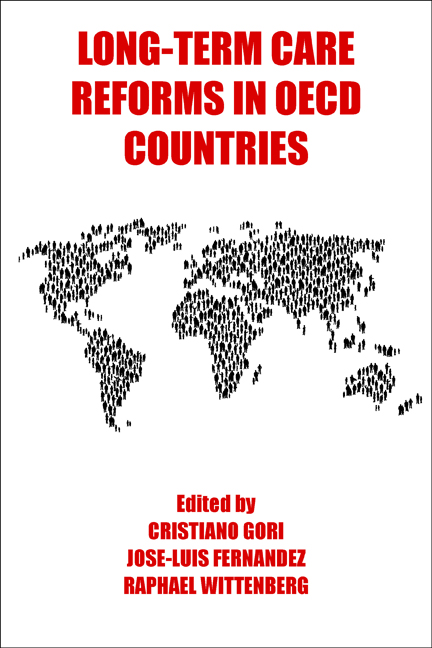Three - The long-term care financing problem
Published online by Cambridge University Press: 19 August 2022
Summary
Introduction
Every developed nation aims to provide assistance to people with long-term care (LTC) needs. Motivations for supporting such programmes combine recognition of how vulnerable they are with a strong sense of social obligation, particularly towards the older people who comprise the majority of LTC recipients. And yet, the increasing number of people living to older and older ages, along with advances in medicine that ensure that even those with profound impairments live long lives, creates increasing pressure on LTC systems and the funding that supports them. On average across the OECD, it is expected that public LTC expenditures will increase, as a proportion of GDP, from 0.8 per cent in 2010 to 1.6 per cent in 2060 (de la Maisonneuve and Martins, 2013). In conjunction with the more widely recognised crisis in the funding of health services and retirement savings, the growing expense of LTC places pressure on public budgets and reduces funding available for other government services – in some cases, exacerbating political and intergenerational tensions.
Funding arrangements are obviously key to all aspects of performance of LTC systems. This is so not just because of their direct impact on the sharing of the financial burden of care between the state and individuals, but also because by changing the ‘price’ of care faced by service recipients (and often their family) at the point of use, they lead to changes in the patterns of consumption of formal care, therefore affecting the balance between informal and formal care and levels of unmet need.
It is therefore not surprising that many of the most significant LTC reforms in recent years have implied changes in the design of national funding systems. In many instances, funding arrangements have been used to determine directly the care package that is offered by the state. In entitlement systems, in particular, algorithms are used to define the levels of resources available to individuals with different need-related characteristics, as well as with different combinations of income and wealth. Although in some cases these systems allow for flexibility in the allocation to individuals (for instance, in France or Germany they define maximum levels of support for given categories of individuals), in cash-based social security systems such as the Austrian model, funding systems actually dictate the exact level of support that is provided by the state, and how needs are taken into account to define eligibility.
- Type
- Chapter
- Information
- Long-Term Care Reforms in OECD CountriesSuccesses and failures, pp. 25 - 44Publisher: Bristol University PressPrint publication year: 2015

